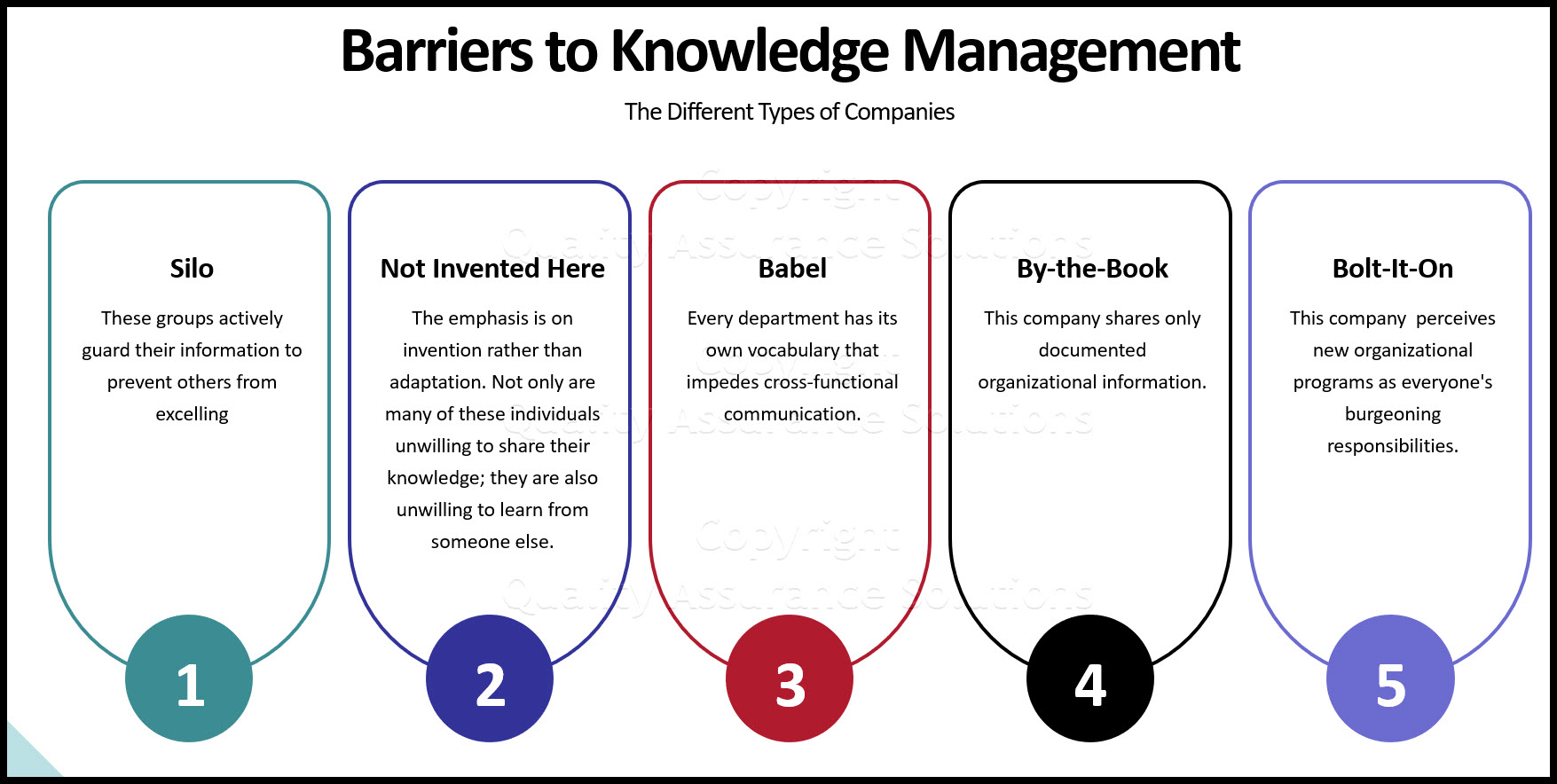Barriers To
Knowledge Management
Transfer

Knowledge management (KM) is the activity of expanding, storing, and retrieving intellectual capital. Intellectual capitol is the collective knowledge (including experience, skills, data, and information) of an organization. Transferring knowledge from employee to employee provides another tool for improving organizational performance because it enhances personnel access to relevant and timely information.
In a 1994 study, Dr. Gabriel Szulanski led research on best practices transfer. The biggest barrier to knowledge transfer was ignorance. All though many individuals within a company had skills, the skills were not documented or well known. So most people did not know who had which skills.
Your ISO 9001:2015 Kit includes Templates, QA Manual, Implementation Guide and a Gap Assessment Internal Audit Tool for ISO 9001:2015
Another barrier to knowledge transfer is the lack of a personnel relationship between the source and the recipient of the knowledge. There was no personal motivation by the knowledge holder to justify the time and effort to provide the knowledge to a nonaligned recipient.
Additionally, people may not see any benefit in pursuing best practices, thus their lack of motivation is a barrier.
Research team ODell and Grayson found that although barriers were sometimes personal, generally they stemmed from organizational structures, management practices, and measurement systems that discourage or inadvertently punish information sharing. They divided these barriers into the following five types of companies:
1-The Silo Company, Inc and Knowledge Management
Silos range from tiny functions to business units that focus on maximizing their own accomplishments. These groups actively guard their information to prevent others from excelling. This approach compromises the performance of the organization as a whole. The pervading sentiment is To get my piece of the pie, somebody else has to go hungry or Why should I train my replacement? Let em figure it out for themselves the way I had to.
Your easy to edit ISO 9001:2015 Quality Assurance Manual.
2-The NIH Company, Inc.
The Not Invented Here syndrome is a common malady at engineering-based or consulting companies that value individual technical expertise over knowledge sharing. The emphasis is on invention rather than adaptation. Not only are many of these individuals unwilling to share their knowledge; they are also unwilling to learn from someone else.
3- The Babel Company, Inc.
Employees at this type of company lack a set of common perspectives and terms that serve as the basis for effective communications and knowledge. Every department has its own vocabulary that impedes cross-functional communication. Employees may be willing to work together, but their effectiveness is eroded by time-consuming confusion and misunderstanding.
4- The By-the-Book Company, Inc.
This company shares only documented organizational information. Without practical knowledge, recipients have no opportunity to see the knowledge demonstrated. The existence of a database alone does not cause people to share. The practical applications, hints, and cautions of a seasoned expert makes knowledge worth seeking out and using.
Your ISO 9001:2015 Kit includes Templates, QA Manual, Implementation Guide and a Gap Assessment Internal Audit Tool for ISO 9001:2015
5- The Bolt-It-On Company, Inc.
This company encounters resistance to knowledge transfer because its perceived as yet another slick organizational program added to everyone's already burgeoning responsibilities. Knowledge practices and the technology to support them must be prevalent in everyday work.
- QAS Home
- Knowledge Management
- Barriers
|
Quality Assurance Solutions Robert Broughton (805) 419-3344 USA |
 |
|
Software, Videos, Manuals, On-Line Certifications | ||
|
450+ Editable Slides with support links | ||
|
Corrective Action Software | ||
|
Plan and Track Training | ||
|
AQL Inspection Software |
|
Learn and Train TRIZ | ||
|
Editable Template | ||
|
Templates, Guides, QA Manual, Audit Checklists | ||
|
EMS Manual, Procedures, Forms, Examples, Audits, Videos | ||
|
On-Line Accredited Certifications Six Sigma, Risk Management, SCRUM | ||
|
Software, Videos, Manuals, On-Line Certifications |

















